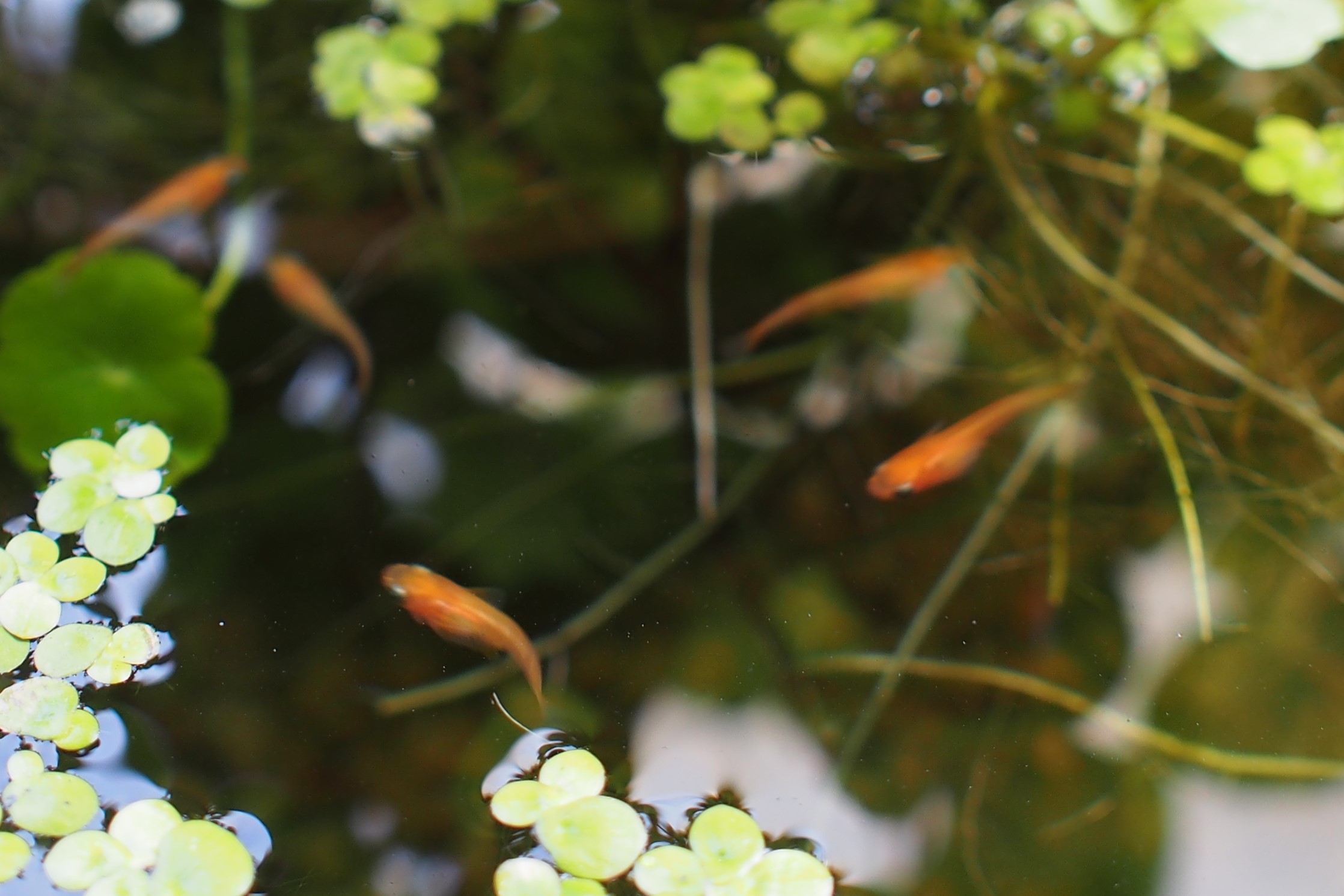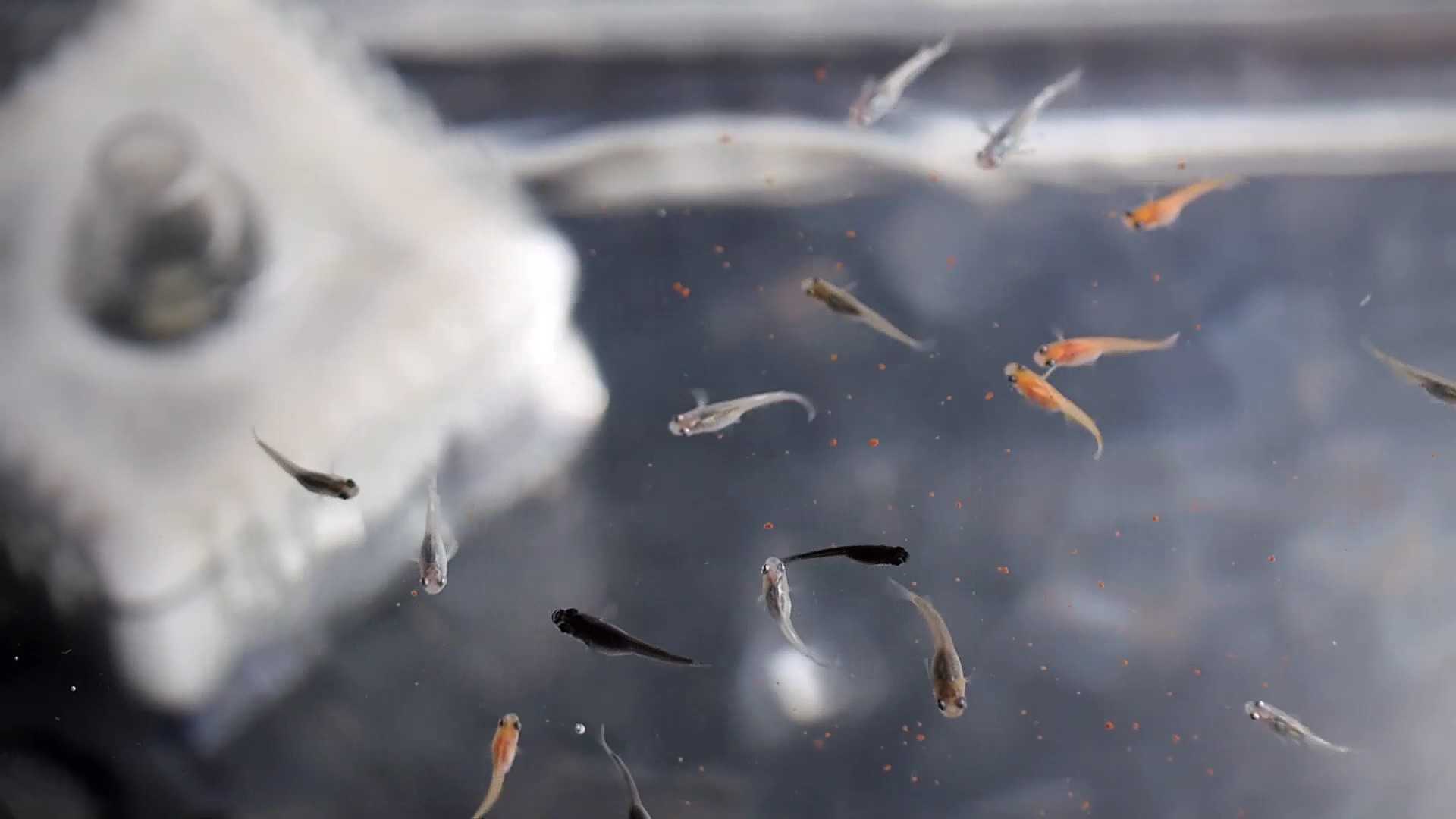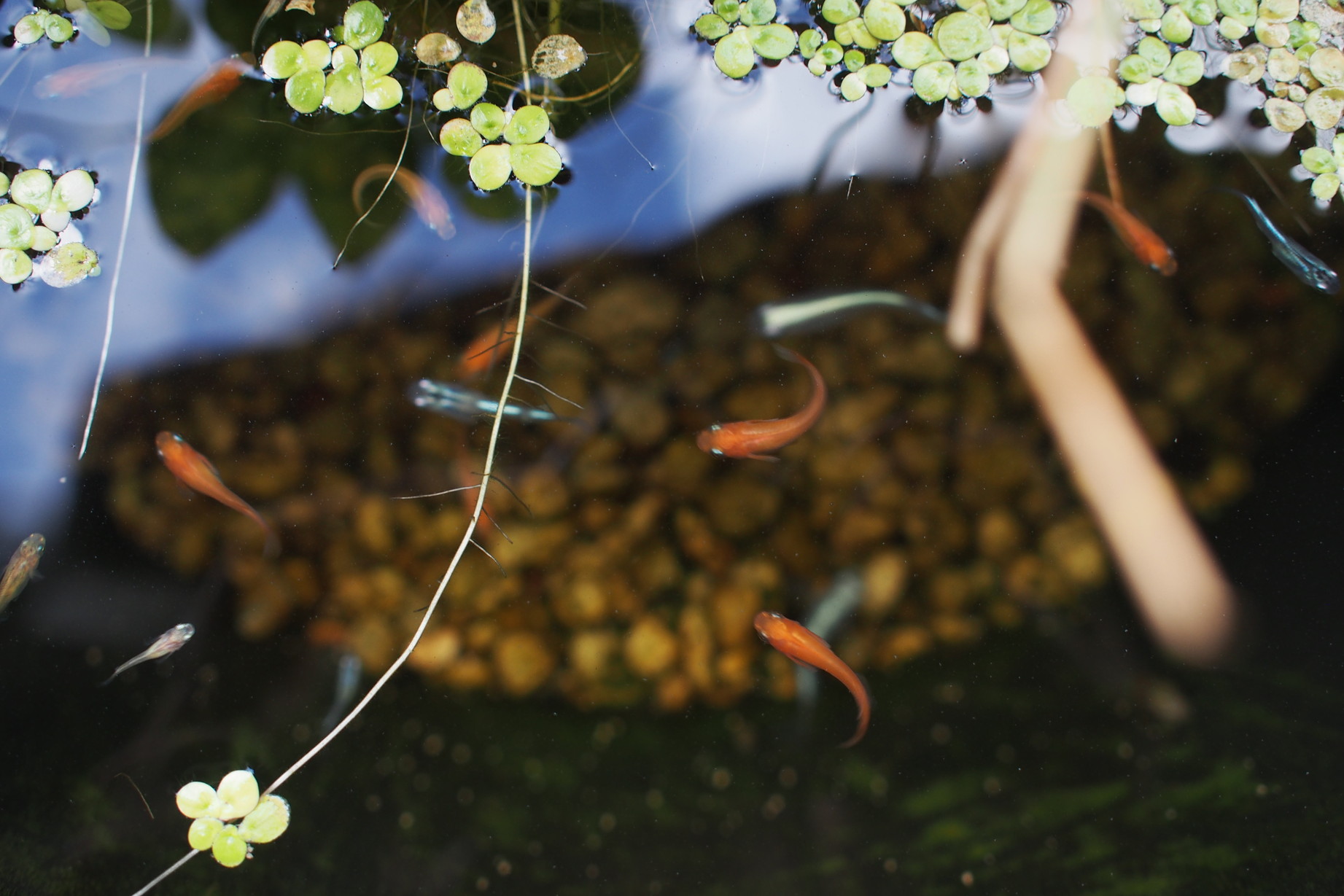Egg-laying season for killifish in a natural environment is from May to October
When kept outdoors or without a heater, medaka killifish lay eggs generally from May to October each year.
After October, even if they lay eggs, the eggs may not hatch due to low water temperatures or the fry may not grow well.
A heater may be necessary for breeding after October.
Year-round breeding is possible with a heater
Year-round breeding is possible if a heater is installed.
There is a risk of shortening the lifespan of killifish because they are artificially made active at a time when they are hibernating in their normal natural environment. It would be a good idea to introduce heaters if your goal is to breed or improve the breed.
If you have a male and a female, they will usually spawn before you know it
Breeding killifish is one of the easiest of all ornamental fish.
They will spawn easily if you have a healthy adult male and female.
A killifish capable of spawning is about 1.5 cm or larger
Under good rearing conditions, killifish begin mating and spawning 5~6 weeks after hatching, at a size of 1.5 cm or more in length, when their fins and other organs are formed.
Because they have a short life span and many external enemies, they seem to mature quickly.
Not a single female lays eggs! Why?
If you are keeping multiple killifish and they are not laying eggs at all! What is the cause?
First, let’s check if there are males and females
Distinguishing between male and female Killifish is easy once you get used to it.
You can distinguish between males and females not only by their appearance, but also by their reproductive behavior.
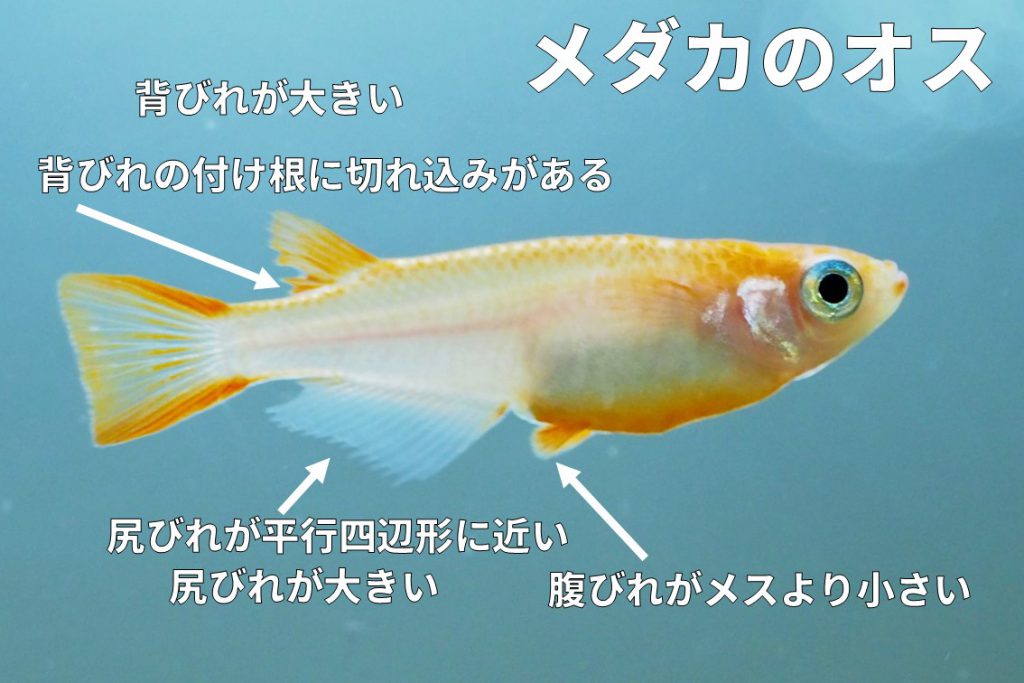
Male medaka characteristics
- Large dorsal fin
- Cut or cleft at the base of the dorsal fin</li
- Rump fins nearly parallelogram-shaped</li
- Bigger butt fins
- Smaller ventral fins than females
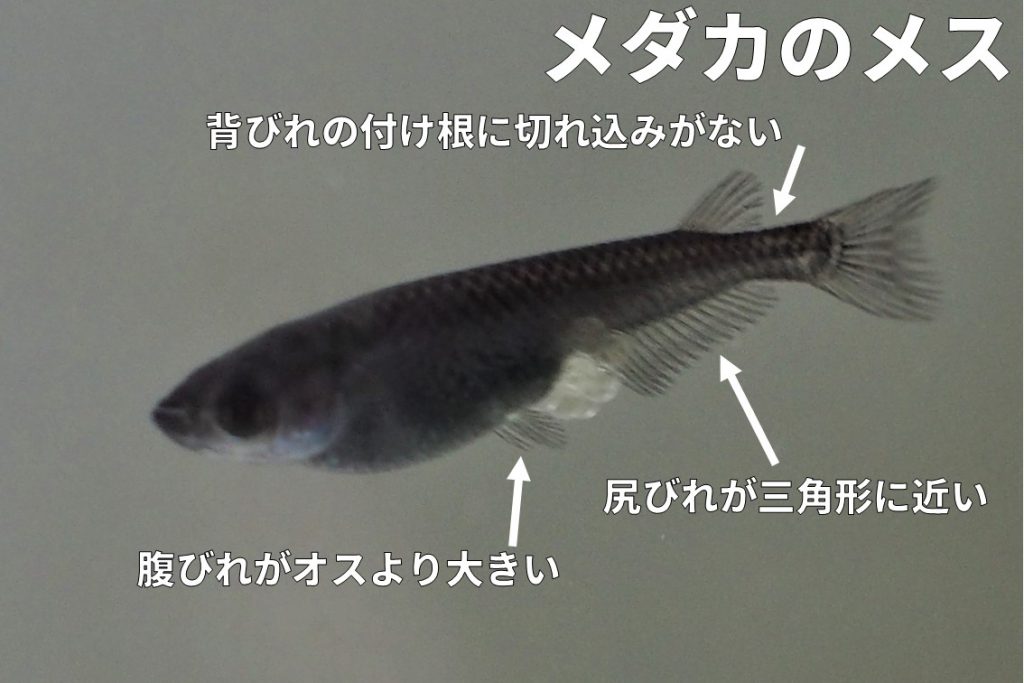
Female killifish characteristics
- No cut or tear at the base of the dorsal fin
- Ventral fin larger than in males
- Rump fins nearly triangular
Only healthy males and females will spawn
Only killifish in good health will mate and spawn together.
Male killifish do not seem to court weak females, and if the male is weak, they will not mate.
Note that many recently bred killifish are weak!
With the recent killifish boom, we see a lot of breed-improved killifish being sold at home centers and pet stores, but we feel that many of them are weak.
It is healthy females that lay many eggs. Be sure to buy from a reputable store that sells healthy killifish. Purchase from a reliable shop that sells healthy killifish.
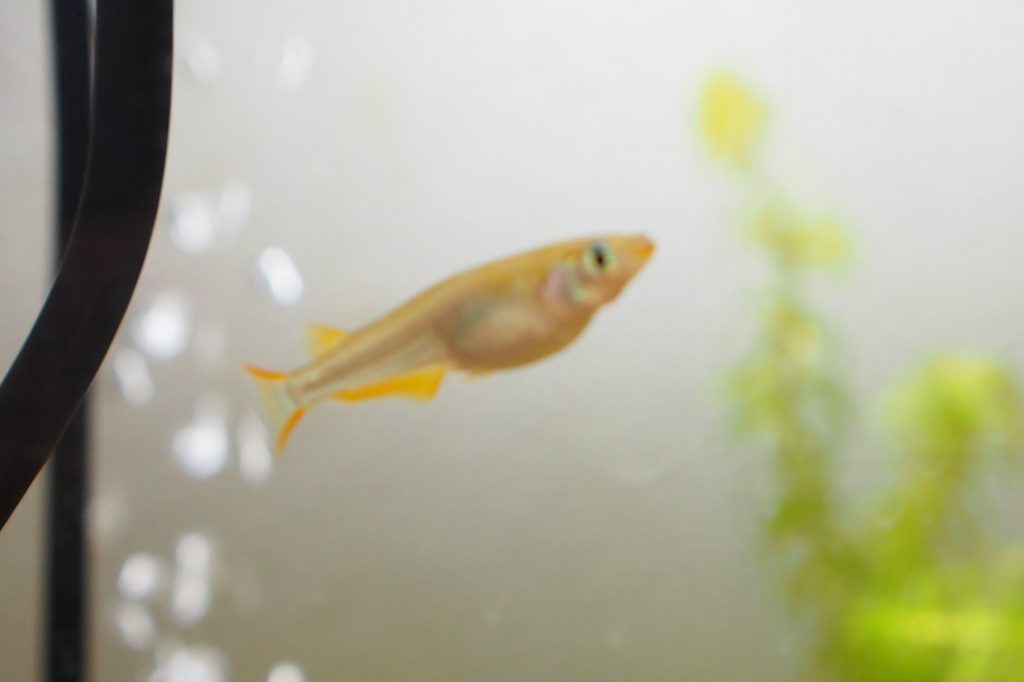
Compatibility between killifish is also important
No matter how many males and females you have, just like humans, if they are incompatible, they will not spawn easily.
Studies have shown that killifish with different body colors are not interested in each other.
Although this is not much of a concern, if a healthy male and female killifish do not lay eggs easily, it may be a good idea to try adding another individual.
What to do if they lay eggs? Let’s quarantine the eggs
So, what should we do once the female has successfully started hanging eggs? First, collect the eggs.
If they are left with the parent killifish as they are, the fry will be preyed upon by the parent killifish immediately after birth.
Note that killifish will eat most of the zooplankton that can fit in their mouths. So here is an introduction to the egg collection method.
How to collect killifish eggs: Collecting eggs directly from the female
Collect the female killifish with a net and collect the eggs directly from the killifish using your fingers or a brush.
This method has the advantage of ensuring that all eggs are secured, but has the disadvantage of being physically taxing on killifish and labor intensive for humans.

How to collect killifish eggs: collecting them from spawning beds
This is probably the most common method. Eggs laid in water plants or on artificial spawning beds are collected one by one.
It is less stressful for the killifish and easy to collect. In our house, we float balls made of moss and let them lay their eggs in them.
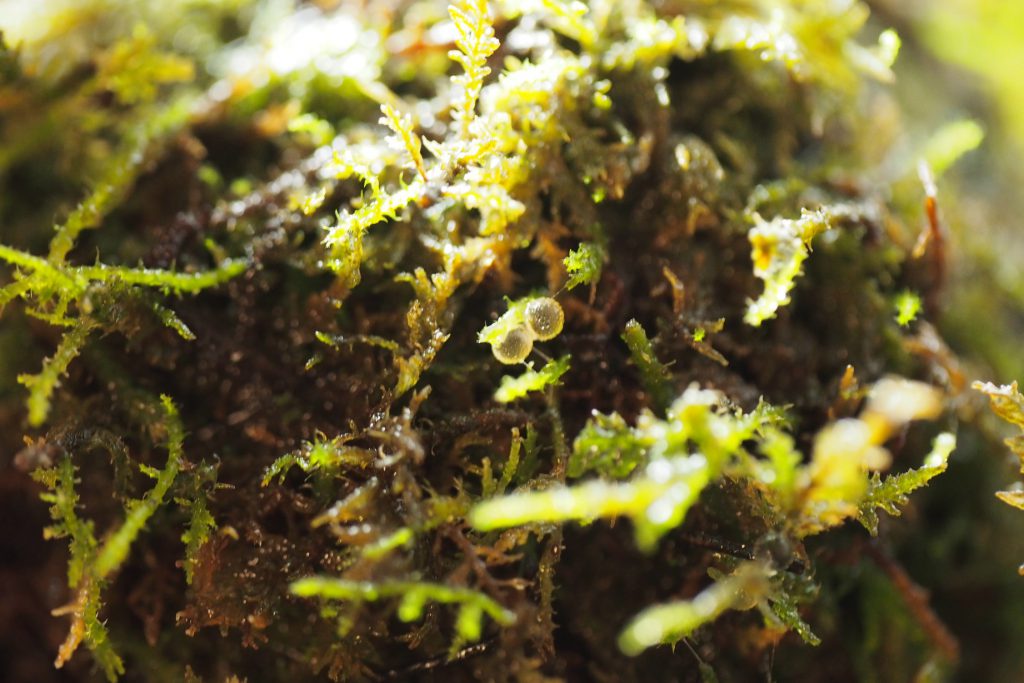
How to collect killifish eggs: Collecting fallen eggs
If the situation is not covered with gravel or other materials, it is possible to collect fallen eggs.
You can also collect the eggs by simply filtering them through a net when you change the water with a water change hose. A dropper for tropical fish or killifish is also recommended for ease of use.
How to raise killifish eggs
Hatching even if you just put them in tap water
Actually, hatching killifish eggs is not that difficult.
If the eggs are properly fertilized, they will hatch simply by placing them in tap water.
Total temperature for killifish eggs to hatch is 250°C
The total temperature for hatching is said to be 250℃. This means that they will hatch if kept at a water temperature of 25°C for 10 days. A lower water temperature will result in an additional few days, and a higher water temperature will result in a shorter time to hatching.
You can use methylene blue with or without
Many people use a chemical called methylene blue solution, which is effective against fish diseases, but it is very effective but requires caution.
Because the staining power is too strong, it is troublesome if it gets on clothes or hands.
Breeding both eggs and fry is easy as long as you keep them in a large container with plenty of room to spare.
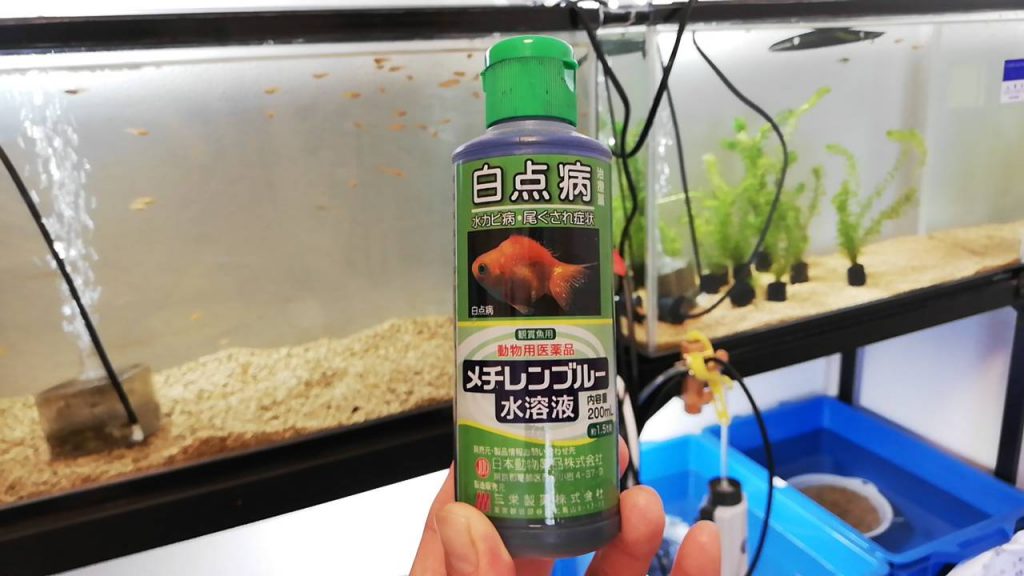
Common mistakes
Eggs turn white and moldy
Unfertilized eggs quickly become cloudy white due to water mold. If not removed early, even the fertilized eggs will be contaminated by water mold. To prevent water mold contamination, break apart each egg you collect. Medaka eggs are surprisingly tough and will not be broken by a slight touch with your finger.
Fry do not grow due to poor water quality
From spawning to hatching often goes well, but raising fry is the most difficult part of killifish keeping. I will not go into detail about raising fry here, but I think that in many cases, fry do not grow well due to poor water quality or lack of food.
The main points are to keep them in a large enough container and to feed them as much food as they can eat.
Related Articles
This website provides information on how to keep killifish.
Please take a look at our other articles.
Ecology and biological and morphological characteristics of medakaStandard Japanese Names: northern medaka, southern m[…]
Having trouble keeping killifish fry?[caption id="attachment_2628" align="aligncenter" width="1024"] Aim to be full of[…]
Conditions for killifish to spawnFirst, let's keep in mind the conditions for killifish to spawn.When the killifis[…]
Medaka keeping is easy even for kids once you get the hang of it!Medaka are probably the easiest type of fish to keep […]

